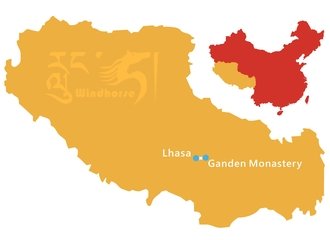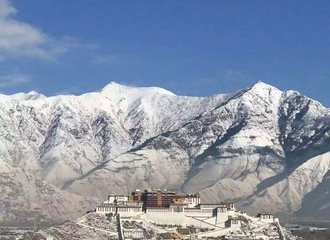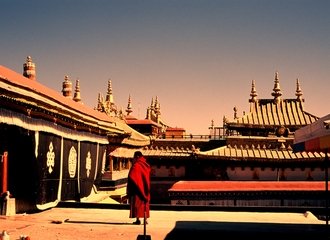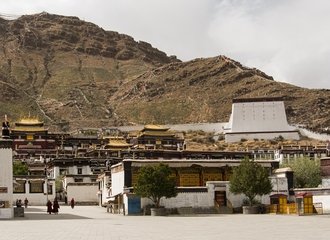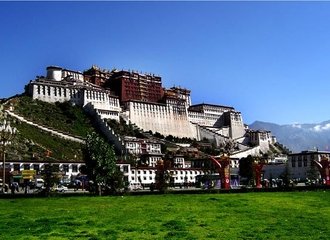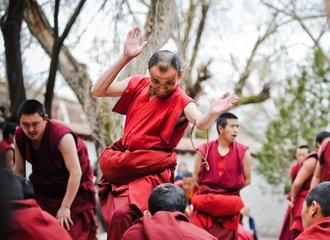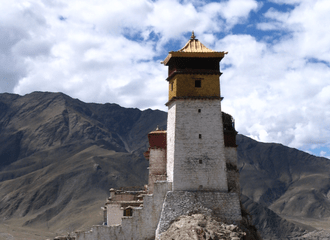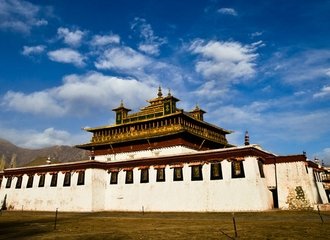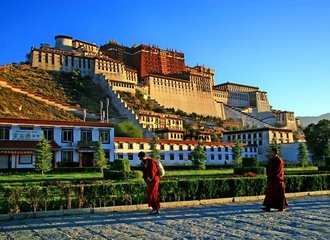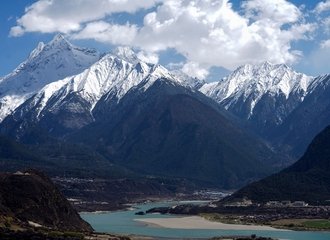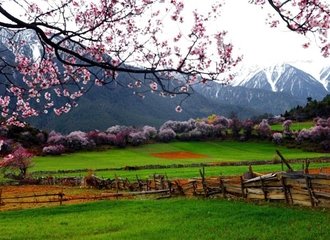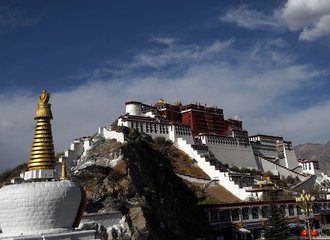The Ultimate travel guide to Yunnan
Yunnan, which means “South of the Clouds” in the Chinese language, is a unique corner located in the southwest of China, bordering Tibet, Sichuan, Guizhou and Guangxi. It is the most diverse one among all provinces in China, geologically as well as culturally. With varied natural splendors, including stunning rice terraces, idyllic red fields, crystal clear lakes, snow-covered mountains, etc., you will get a trip in Yunnan to suit best, whether you favor those natural wonders for photographing, or fancy hiking along the off-the-beaten-path.
Besides the magnificent scenery, Yunnan is also perfect for getting inspiration from the distinct culture, costumes, architecture, warm-hearted people, with the particular mix of many ethnic minorities with their own customs and traditions remaining. The merger of extraordinary landscapes and many distinct ethnic groups have made Yunnan a magical land with nature and human feelings. If travelers wish to choose one destination to combine natural wonders and cultural ethnic groups to tour China, Yunnan can be the first choice.

Best time to travel Yunnan and weather details
Thanks to the diverse landscape, Yunnan is a year-round travel destination. No matter when you go to Yunnan, you can experience different weather from winter to summer, which changes daily instead of seasonally. Depending on what you favor and which part you prefer to go to, the best time can be varied.
Spring (February to April) comes to Yunnan a little earlier than the northern region in China, most parts of the province start to wake up, with the large temperature difference changing from 8°C - 20˚C (46°F - 68°F) from day to night. Especially from February to March, it is the best time to explore Luoping for the rape flowers burst into yellow bloom, and head to Yuanyang for photographing the water-filled rice terraces with sun reflections. Also, the peach blossoms in the “City of Eternal Spring'' - Kunming are all blooming, creating a stunning springtime scene.
Summer (May to August) brings warmth to Yunnan, with the highest temperature reaching 30˚C / 86˚F. Even with more rainfalls sometimes, Yunnan is still a nice summer resort with a variety of places to escape the heat, such as Lashi Lake and Lugu Lake in Lijiang. From May to June, it is the best time to appreciate the rhododendrons blooming at Laojun Mountain in Lijiang. Shangri-la boasts numerous pretty flowers in the summer, which is a good time to visit the Pudacuo National Park and Napahai Lake.

Autumn (September to November) is the most pleasant time to travel in Yunnan, as the weather starts to get cooler, and it is generally a dry season with the bright sky almost every day. It is a great time for outdoor activities like hiking to Yubeng Village or Tiger Leaping Gorge. In addition, the emerald lake at Jade Dragon Snow Mountain, the autumnal fairyland in Pudacuo National Park, and the Ginkgo Village in Tengchong County are the most enjoyed places by travelers. By the end of November, most regions cool off and some places (such as Shangri-la) even start getting snowfalls.
Winter (December to January) is not very cold in Yunnan where some regions do remain decently warm with temperatures over 20˚C, but it is regarded as the off-season for traveling to Shangri-la which tends to get chilly. Winter is a good time to visit Xishuangbanna to escape the cold weather and enjoy the tropical rainforest. For those who are bound to enjoy the snow world, the Jade Dragon Snow Mountain in Lijiang and the Mount Meili in Shangri-la should not be missed.

What to see and do in Yunnan
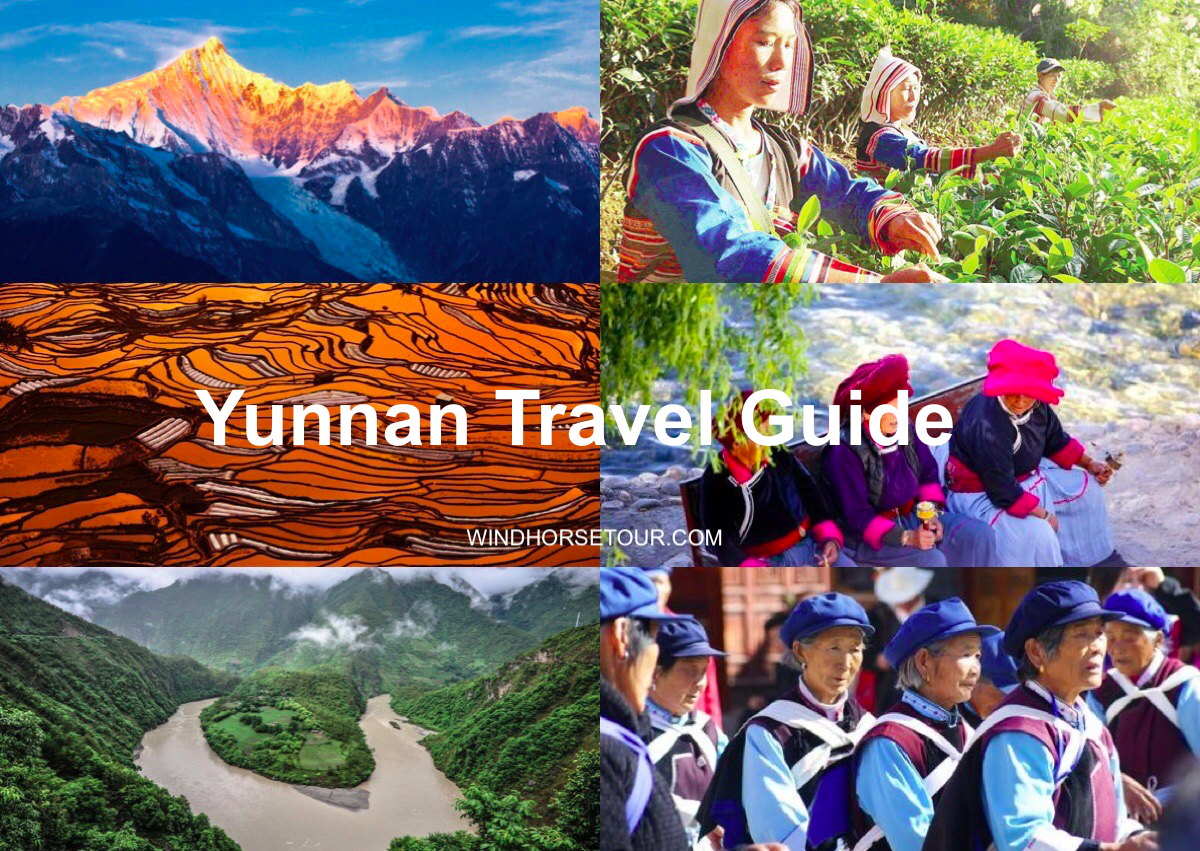

Shoot at the Photography Paradise
Stone Forest
The Stone Forest, located in Shilin County near the provincial capital Kunming, is an outstanding natural marvel of tree-like rocks caused by the corrosion of limestone. Be honored as the “Stone Forest Museum”, it is the only karst stone forest in a subtropical highland on the planet. The whole scenic region of Stone Forest is divided into seven spots: Greater and Lesser Stone Forests, Naigu Stone Forest, Zhiyun Cave, Long Lake, Moon Lake, Dadieshui Waterfall, and Qifeng Cave. Among all mentioned spots, the Greater and Lesser Stone Forests are the main areas that are often visited by travelers, with odd-shaped peaks standing upright like many trees in a forest.
Jade Dragon Snow Mountain
The Jade Dragon Snow Mountain is located north of Lijiang, with its highest peak at [5,596m/18,360ft]. As the sacred mountain of Naxi ethnic people, it is a virgin peak that has yet to be conquered, with clouds and mist veiled all year round. Composed of 13 snow peaks, the Jade Dragon Snow Mountain boasts a variety of majestic natural landscapes, such as awesome glaciers, alpine meadows, and primitive forest. A visit to the Jade Dragon Mountain is a must-experience in Lijiang, and don’t miss the highlights: Glacier park, Ganhaizi Meadow, Yak Meadow, Blue Moon Valley, Spruce Meadow, and the Impression Lijiang Show.
Pudacuo National Park
Pudacuo National Park, the first national park in China, is located in the central area of Diqing Tibetan Autonomous Prefecture (also known as Shangri-la city). As part of the Three Parallel Rivers of Yunnan Protected Areas World Heritage Site, it is the paradise for photographers, especially from May till September. It is composed of three scenic areas: Shudu Lake, Bita Lake, and Militang Pasture with Tibetan villages, together with the vigorous forests, turquoise lakes, and verdant meadow. While Bita Lake and Militang Pasture have yet to be open after the closure for maintenance from 3rd September 2017, Shudu Lake is still open for travelers.
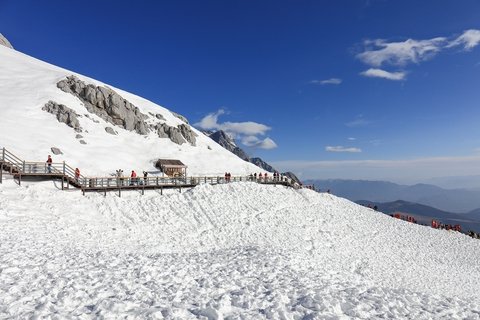
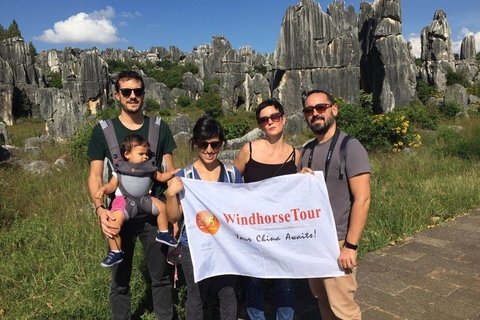
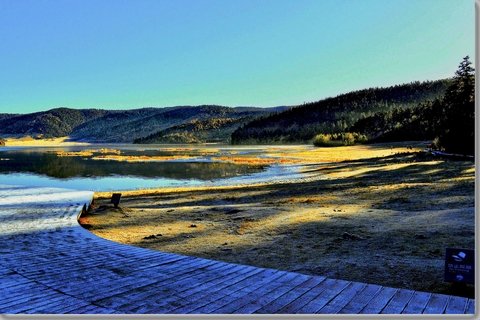
Yuanyang Rice Terraces
Yuanyang Rice Terraces are situated in Honghe Prefecture in the southeast of Yunnan, about 320km/5-hour driving from the provincial capital Kunming. As the core of Honghe Hani Rice Terraces inscribed on UNESCO’s World Heritage, Yuanyang Rice Terraces inspire massed travelers and photographers for the fascinating rice paddies filled up with water during winter, creating awesome reflections of the sunlight, resembling a glimmering ladder to the heaven. Apart from the amazing landscape, travelers can also experience the ethnic culture of the Hani group living on this secluded land, joining in the festival, visiting the local markets, and looking into daily life.
Dongchuan Red Land
Dongchuan Red Land, located in the 200km northeast of Kunming city center, is reputed as “God’s Palette” with eye-catching and distinctive red fields (caused by the abundant oxidized iron in the earth in years), various colored crops, bright blue sky, and white cloud. The best time to visit Dongchuan Red Land is from May to June, as well as from September to December, when the colorful hilly terrain is covered with red earth, green potato seedling and golden wheat.
Luoping Canola Flower
Luoping is a small county located in the Qujing City of Yunnan, about 213km east from Kunming. Every spring, from late-January to early April, when the green farmland is shifting to golden with many karst hills dotted, there is nothing like a wide-open golden canola flower to appeal to travelers and photographers coming to Luoping for a visual feast. As the canola flowers are scattered in different directions, two routes are recommended to capture the highlights, one is northeast line with Niujie Luosi Field, Jiulong Waterfalls, and Jinji Peak, and another one is southeast line with Hundred of Thousands of Mountains, Duoyi River, and Three Gorges of Buluge.
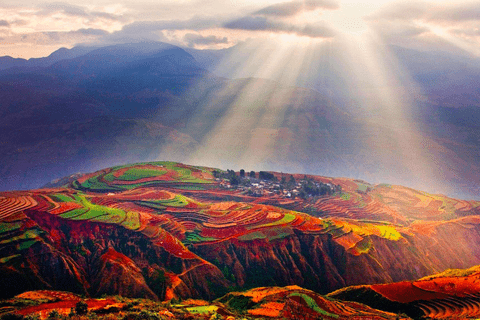
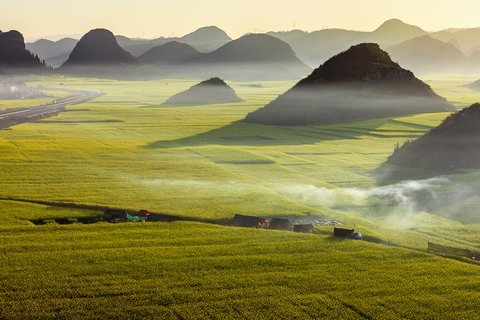

Feel the Slow Paced Life of Old Towns
Lijiang Old Town
Lijiang Old Town, also called Dayan Old Town, is located on the Lijiang plain in the southwest of Yunnan. It is the ultimate exemplary habitat of the Naxi ethnic group, with the comfortable environment, unique minority culture, and flowing water snaking through the balanced building complexes and pleasant appropriate sized dwellings. As one of the two well-preserved towns listed in UNESCO World Cultural Heritage sites, along with Pingyao Ancient City in Shanxi, Lijiang Old Town is well worth a visit to enjoy the leisure and lovely atmosphere with Naxi culture experience.
Dali Ancient City
Dali Ancient City is a picturesque town located at the foot of Cangshan Mountain and west of Erhai Lake with rich Bai ethnic culture. Acted as the capital of the ancient Nanzhao Kingdom and the Dali Kingdom, Dali Ancient City still preserves the square-shaped structure, resembling a chessboard. It is more graceful and comfortable with fewer people than Lijiang Old Town, and travelers can leisurely wander through the Bai ethnic architecture, to the nice temples, city gates, old courtyard style cafes, exquisite shops and bars.
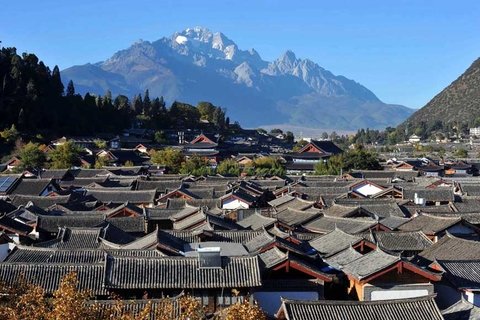
Shaxi Ancient Town
Shaxi Ancient Town is located in the quiet little village between the famous Dali Ancient City and Lijiang Old Town. Served as a main halt and market town on the Ancient Tea Horse Road that connected Tibet with the rest of China, it is a delightful surprise that hasn’t become a tourist trap full of gift shops. Filled with ancient houses, an old open-air theater, an old temple, the exceptional Yujin Bridge, and a vigorous Friday Market, Shaxi Ancient Town is a perfect stop to get a glimpse of old China.
Shangri-La Dukezong Ancient Town
Dukezong Ancient Town literally means “Moon City” in the Tibetan language, which was built according to the ideal country of “Shambhala” described in Buddhist scriptures. With a 1300-year-old history, it is the largest town in Shangrila City, with well-preserved authentic Tibetan dwellings, narrow and winding lanes, grand prayer halls, multicolored prayer flags, and outdoor markets. Unfortunately, the ancient town was partially damaged by the huge fire in 2014. After nearly 2-year reconstruction and recovery, it had been reopened for travelers since 2016.
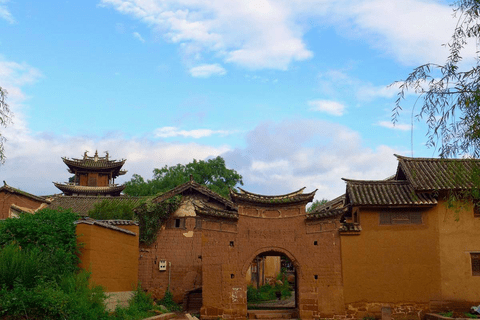
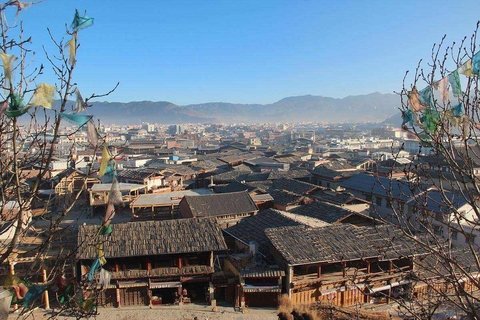

Savor Local Customs of Ethnic Minorities
Baisha Village
Baisha Village, nestled at the foot of the Jade Dragon Snow Mountain, is the earliest settlement of the Naxi ethnic group. As part of Lijiang Old Town listed in the UNESCO World Cultural Heritage sites, it is also the seedbed of the Tusi Dynasty which developed from the ancient Mu Clan. Unlike the overcrowded Lijiang Old Town, travelers can witness the primitive life and culture of the Naxi people, without too many tourists and shops on both sides of the old street. In addition, the village is noted for the Mural painted during the Ming Dynasty, blending with the artistic styles of the Naxi, Tibet, and Bai minority.
Xizhou Village
Xizhou Village is located in the northwest corner of Dali, facing Erhai Lake to the east and Cangshan Mountain to the west. With a history of more than 1000 years, Xizhou Village is praised as “The Museum of Bai Architecture” with the largest scale of well-preserved traditional Bai residences kept since the Ming Dynasty, characterized by ornate gateways, wide courtyard, and the best balance between the structural simplicity and elegance. In addition, travelers can also experience the local life of the Bai ethnic people, by roaming the morning market, trying the Three-course tea, making a Tie-dye at a local dye house, tasting the typical snack Xizhou Baba.
Dongba Culture Museum
Dongba Culture Museum, located in Lijiang City, is a traditional Naxi style quadrangle courtyard, housing displays on Dongba pictographic script, paintings, customs, living appliances, and religious musical instruments of the mysterious ancient Naxi ethnic group. As a precious cultural relic of mankind, the Dongba culture displayed by the museum is the only living hieroglyph in the world, and the Dongba classical literature is listed in UNESCO as a written world heritage.
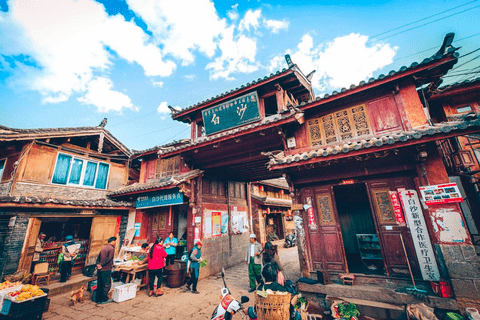
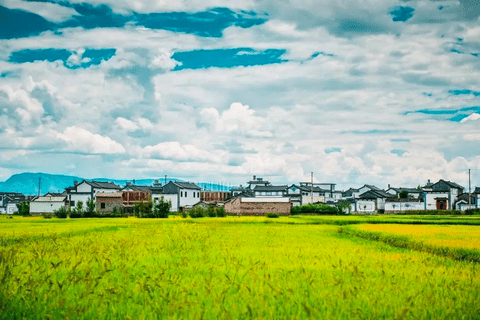
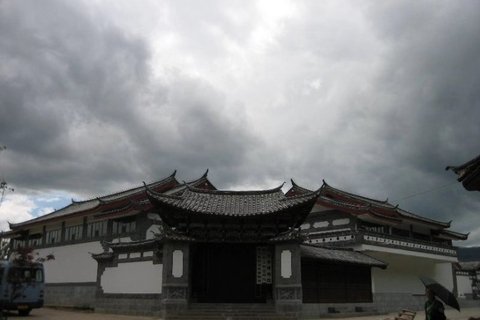
Lugu Lake
Lugu Lake, located at the edge between Sichuan and Yunnan, is an alpine lake famed for its incredible landscape. The Mosuo people also call the Lugu Lake as “mother Lake” where they have been living for generations in a matriarchal society with their unique marriage culture retained. To admire the beautiful scenery and experience the special culture of the matriarchal tribe, travelers can take the particular Mosuo canoe sailing on the crystal clear Lugu Lake, cycle through the minority villages around the lake, pay a visit to a local Mosuo people’s home, and join a bonfire party at night to have fun with local Mosuo people together.
Ganden Sumtseling Monastery
Ganden Sumtseling Monastery, situated about 5km from Shangri-la City, is the largest Tibetan lamasery in Yunnan province. As the core of the Gelugpa (Yellow Hat) in Sichuan and Yunnan, it is also the most important monastery in southwest China. Built in a faithful resemblance to the Potala Palace in Lhasa, it is reputed as the “Little Potala Palace” housing innumerable Tibetan Buddhist treasures. Wandering through the aureate pillars and incense-filled rooms of this “Tibetan Art Museum”, travelers can enjoy a spectacular view of the small town from the top of the monastery. Every December 26-29 (Tibetan calendar), the Gedong Festival will be held at the Ganden Sumtseling Monastery, which is a rare chance to encounter the Tibetan culture and religion.

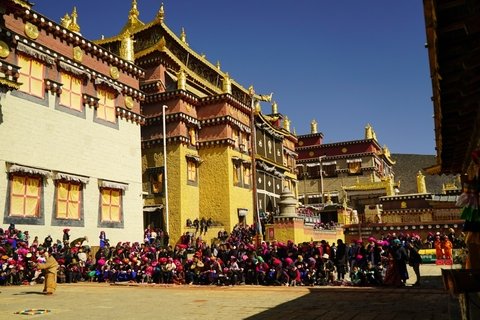

Hike in the Secret Retreats
Tiger Leaping Gorge
Tiger Leaping Gorge is located between Lijiang and Shangri-la, about 88km away from Lijiang and about 105km to Shangri-la. It offers two trails along the gorge, one is a low trail for regular travelers to follow the course of the river at the bottom of the canyon. Another one is a high trail above the river, which is taken by native people and hikers. As one of the world's deepest gorges where the Yangtze River is squeezed by both Jade Dragon Snow Mountain and Haba Snow Mountain, Tiger Leaping Gorge is regarded as one of the best places in China for hiking, with snow-shrouded peaks before your eyes and turbulent roaring river at a thousand meters below.
Laojun Mountain National Park
Laojun Mountain National Park is located in the west of Lijiang, bordering the Jianchuan County of Dali and Lanping County of Nujiang. Honored as “the Ancestors of all mountains in Yunnan”, it is a showcase of the diverse biology and culture of the Three Parallel Rivers Areas. For adventurous travelers with good physical fitness, the isolated Laojun Mountain is an ideal destination for 4-day hiking: Lijiang Old Town - Dragons Resort - 99 Dragon Pools - Elong Lake - Xiaoqiaotou - Liju village - Golden Thread Factory - Snub-nosed Monkey Observation site - Peach Garden - Shigu Town (the First Bend of Yangtze River) - Lijiang Old Town.
Yubeng Village
Yubeng Village, a picturesque Tibetan village hidden at the foot of Mount Meili, is a paradise for hikers. With only two dozen Tibetan families living, the secluded Yubeng village is an unspoiled utopia far away from the hustle and bustle of city life. Even today, no road has been paved to the village, hiking or horse/mule riding about 18km is the only way to enter into the village. This isolation is what makes Yubeng village extremely fascinating and a worthy hike. From Yubeng Village, travelers can make day hikes to the Ice Lake, the superb Sacred Waterfall, and the Sacred Lake. The more adventurous can go further to explore the second sacred lake and the Nisai Glacier.
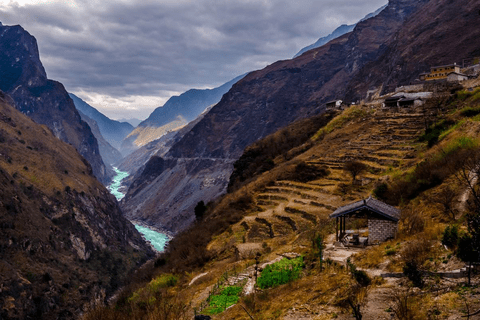

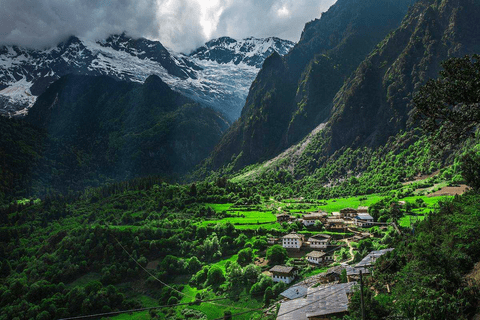

How to get to Yunnan and travel within Yunnan
Yunnan is easily accessible by air, train, or coach. Generally speaking, travelers will take a flight or train to the provincial capital Kunming, before taking a flight, train, or coach to other destinations or regions in Yunnan.
By Air
Currently, there are 14 airports in major cities of Yunnan, such as Kunming, Dali, Lijiang, Shangri-la, and Jinghong (Xishuangbanna). Among all airports, Kunming Changshui International Airport is the largest one, offering direct flights to and from major domestic cities and some foreign cities in Southeast Asia, such as Kuala Lumpur, Singapore, and Bangkok. For travelers, Kunming Airport, Lijiang Airport, and Shangri-la Airport are the most frequently used for arrival and departure.
By Train
There are many normal trains or high-speed trains to Kunming from main cities in China, such as Beijing, Shanghai, Guangzhou, Shenzhen, Guilin, Chengdu, etc. Travelers from Beijing, Shanghai, and Hangzhou usually reach by air, because even the high-speed trains take over 10 hours. While for travelers coming from Yunnan neighboring provinces, such as Sichuan, Guizhou, Guangxi, and Guangzhou, it is a better choice to travel by train with only a 3-6 hours’ ride.
By Coach
As one of the most favored destinations, Yunnan boasts of an efficient system of highway stretching to the major cities in Yunnan, and neighboring provinces of Sichuan, Guizhou, and Guangxi. In addition to planes and trains, travelers can also choose to travel to Yunnan by coach to reach Kunming, the transport hub connecting with the rest of Yunnan.
Travel within Yunnan
For traveling between cities in Yunnan, flights and coaches are usually the top choices, because the development of railways is more difficult than airports/highways in Yunnan, due to its diverse terrain. There are many daily flights from Kunming to Dali, Lijiang, Shangri-la, Jinghong (Xishuangbanna), etc, which is quickest and most convenient. However, for those heading to Dali or Lijiang, the more cost-effective high-speed train is recommended, instead of the flight.
While flights can be expensive, the coaches are an alternative choice for short and medium-distance travel. The developed highway network covers almost every corner of Yunnan, with multiple routes and time schedules for choice.
To move between attractions in nearby areas, traveling by several people with a private car (book through a local China travel agency) is the best way to make for a scenic, comfortable, and most memorable road journey.

Recommended tour and itineraries for Yunnan
For travelers who can only pick one province in China, it should be Yunnan that rewards the most varied landscape and diverse culture. From its incredible natural wonders to epic hiking trails, from ancient towns/villages to the remarkable minority culture, there is no better place to discover the spirit of traveling than Yunnan. Take a perfect Yunnan tour to enjoy the endless beauty of the Yunnan!
For travelers who are photography enthusiasts but short on time, we would suggest hitting Yuanyang for at least 2 days, exploring Bada Rice Terraces for the sunset and terrace panorama, and venturing into Duoyishu Rice Terraces the next day for sunrise and some incredible hiking. If you want to extend the trip, we would advise you to add in Luoping and make your way into the golden canola flower sea. See for yourself with our 9 days Yunnan photography tour to Yuanyang and Luoping, you won’t be able to keep your hands off your camera.
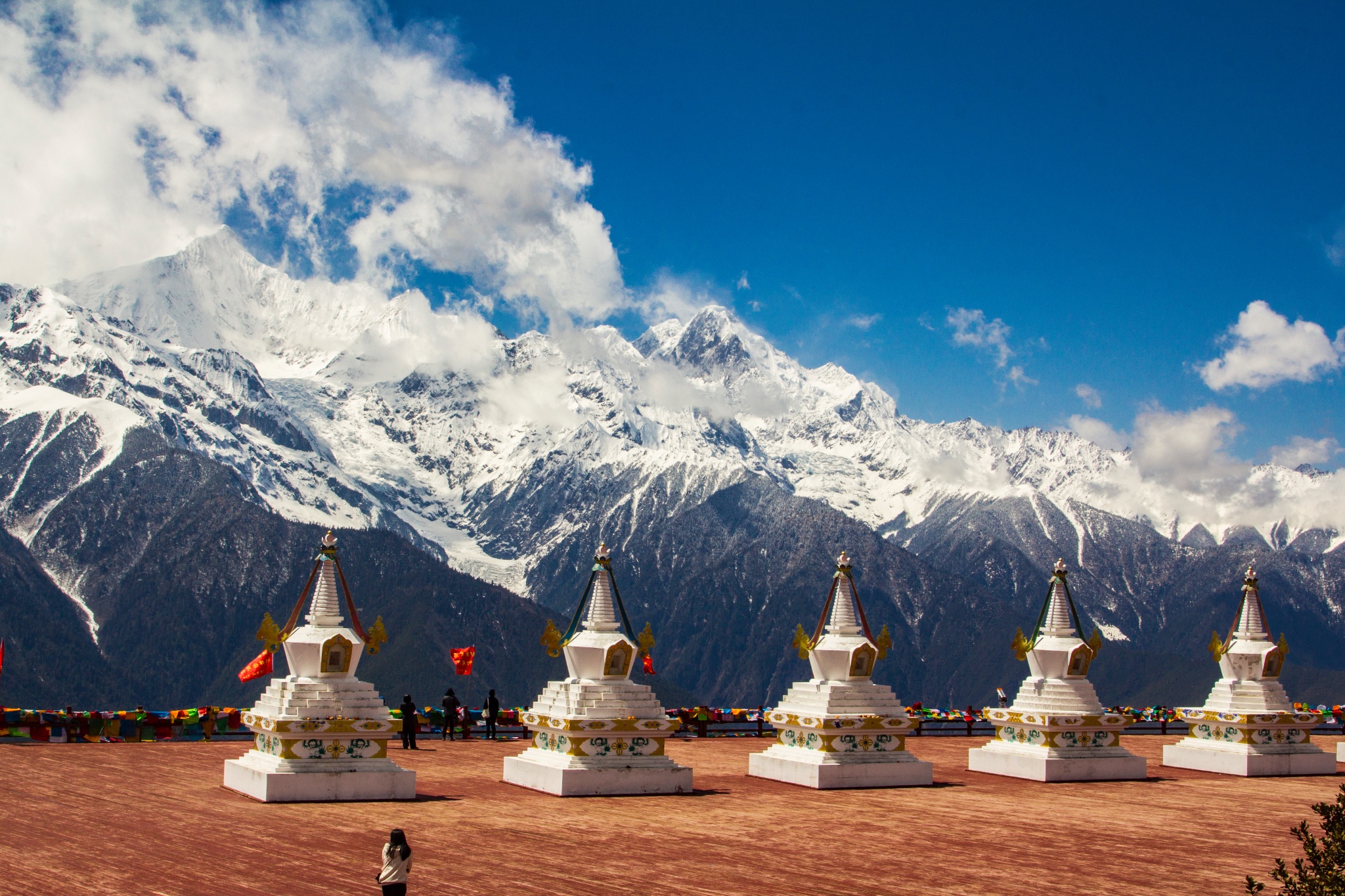
It is really best to plan at least 9 days to cover the highlights in Yunnan. Start off with a couple of nights exploring Kunming then leave for a lifetime journey to the fabled Shangri-la through the Ancient Tea and Horse Road between Dali, Shaxi, and Lijiang. Check out the local market in Xizhou and see if you can eat a Xizhou Baba. Be sure to make detours to visit the Tiger Leaping Gorge.
For travelers who aim to discover China’s diverse minority culture, we would suggest traveling to the hinterland of Yunnan on the 12 days Yunnan minority tour with Lugu Lake exploration. En route you will encounter Naxi, Mosuo, and Tibetan people, take a traditional canoe sailing on the alpine lake, catch a glimpse of the sacred Mount Meili, come across with golden monkeys, and surrender to the fascination of this unique corner of China.
For travelers who want to see more than above mentioned, please don’t hesitate to contact us to start planning an unforgettable trip into Yunnan’s most surreal landscapes.

Accommodation and food in Yunnan
As the trendiest destination for exploding domestic travelers and overseas travelers, Yunnan offers all kinds of hotels, from basic guesthouses to standard business hotels, themed hotels, and luxury hotels, which can meet all travelers’ requirements for a comfortable night to stay in each place. In Kunming, we would suggest selecting hotels near Golden Horse & Jade Chicken Square, or around Dianchi Scenic Area. In Dali, most travelers favor the hotels inside the Ancient Town or go further to stay overnight at Xizhou. In Lijiang, the hotels inside the Ancient Town are the top choice to get around, and the hotels in Shuhe Ancient Town are also good for a quieter atmosphere. In Shangri-la, both hotels in Jiantang town or Dukezong Ancient are convenient for going around and looking for something to eat.
Food in Yunnan has its special flavor which features spicy and sour, combined Sichuan Cuisine and local minority delicacy. People from Yunnan are particularly good at picking local fresh materials for cooking delicacies, such as tropical fruits, flowers, wild mushrooms, and even insects. To have the best regional eating experiences, it is worth trying the Crossing Bridge Rice Noodle, Steam-pot Chicken, Wild Mushroom Dish, Roasted Rice Cake (Shao Er Kuai), etc.
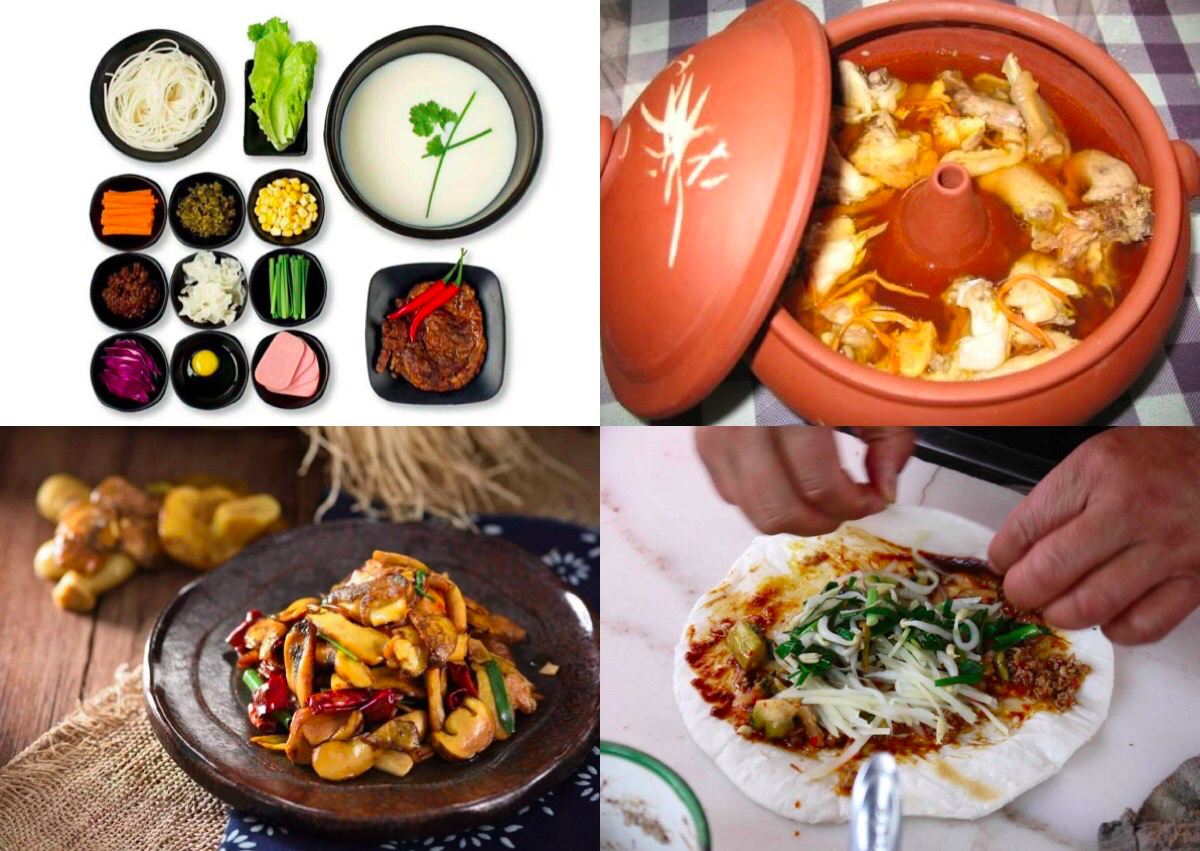

Useful travel tips
- There are many ethnic minorities in Yunnan. Each ethnic group has its own traditions and cultures, your respect for their customs and cultures will be highly appreciated.
- For travelers who plan to visit Shangri-la [3,160m], we would suggest taking some medicines prior to departure to prevent the occurrence of altitude sicknesses, such as Hongjingtian (Tibetan herb) or Diamox. Please refer to ‘how to avoid high altitude sickness’ to get detailed information.
- For travelers who plan to hike in Yunnan, we would suggest following an experienced guide with a few travel partners, instead of hiking alone to make yourself safe.
- As the climate is changeable in Yunnan, a windproof jacket or thick coat, raincoat, sunglasses, and scarf are suggested whenever you travel to Yunnan.


